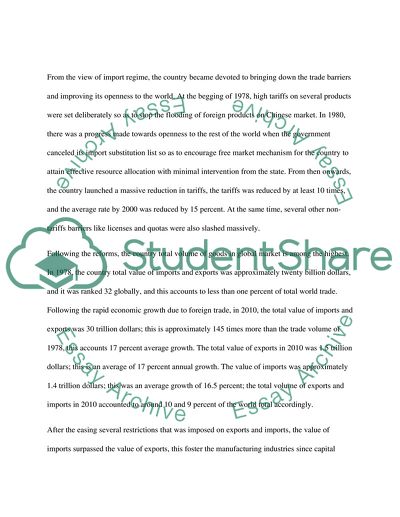Cite this document
(Peoples Republic of China (PRC) Coursework Example | Topics and Well Written Essays - 2500 words, n.d.)
Peoples Republic of China (PRC) Coursework Example | Topics and Well Written Essays - 2500 words. Retrieved from https://studentshare.org/social-science/1815093-assess-the-contribution-of-foreign-trade-to-the-acceleration-of-economic-growth-in-china-after-1978
Peoples Republic of China (PRC) Coursework Example | Topics and Well Written Essays - 2500 words. Retrieved from https://studentshare.org/social-science/1815093-assess-the-contribution-of-foreign-trade-to-the-acceleration-of-economic-growth-in-china-after-1978
(Peoples Republic of China (PRC) Coursework Example | Topics and Well Written Essays - 2500 Words)
Peoples Republic of China (PRC) Coursework Example | Topics and Well Written Essays - 2500 Words. https://studentshare.org/social-science/1815093-assess-the-contribution-of-foreign-trade-to-the-acceleration-of-economic-growth-in-china-after-1978.
Peoples Republic of China (PRC) Coursework Example | Topics and Well Written Essays - 2500 Words. https://studentshare.org/social-science/1815093-assess-the-contribution-of-foreign-trade-to-the-acceleration-of-economic-growth-in-china-after-1978.
“Peoples Republic of China (PRC) Coursework Example | Topics and Well Written Essays - 2500 Words”, n.d. https://studentshare.org/social-science/1815093-assess-the-contribution-of-foreign-trade-to-the-acceleration-of-economic-growth-in-china-after-1978.


